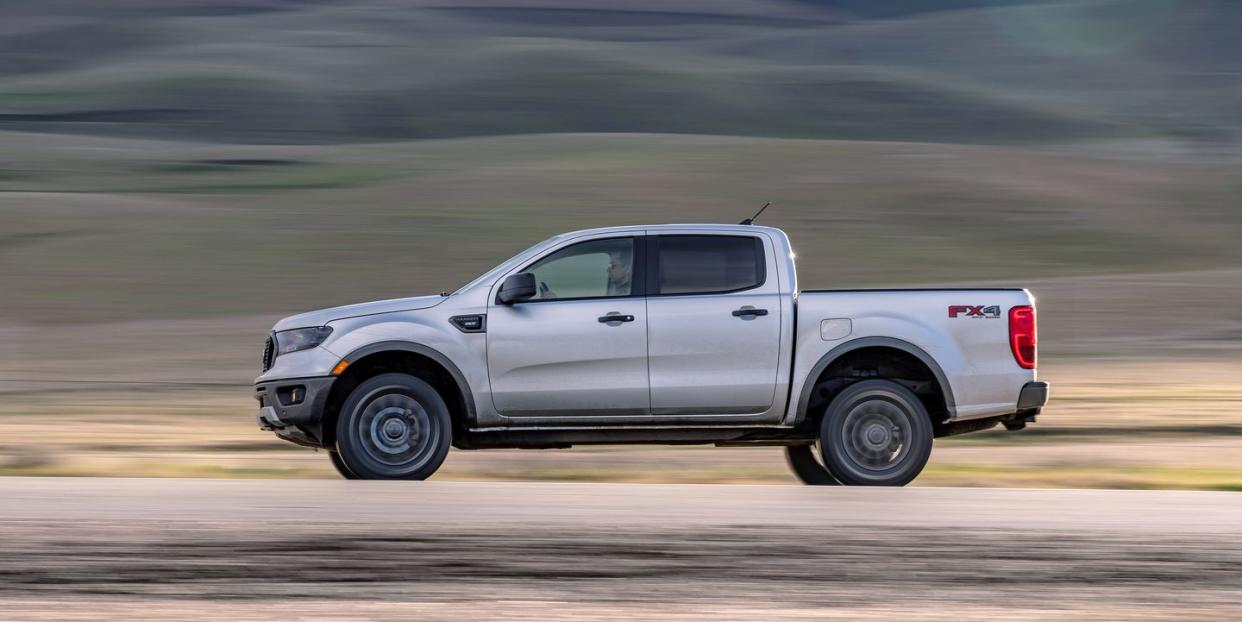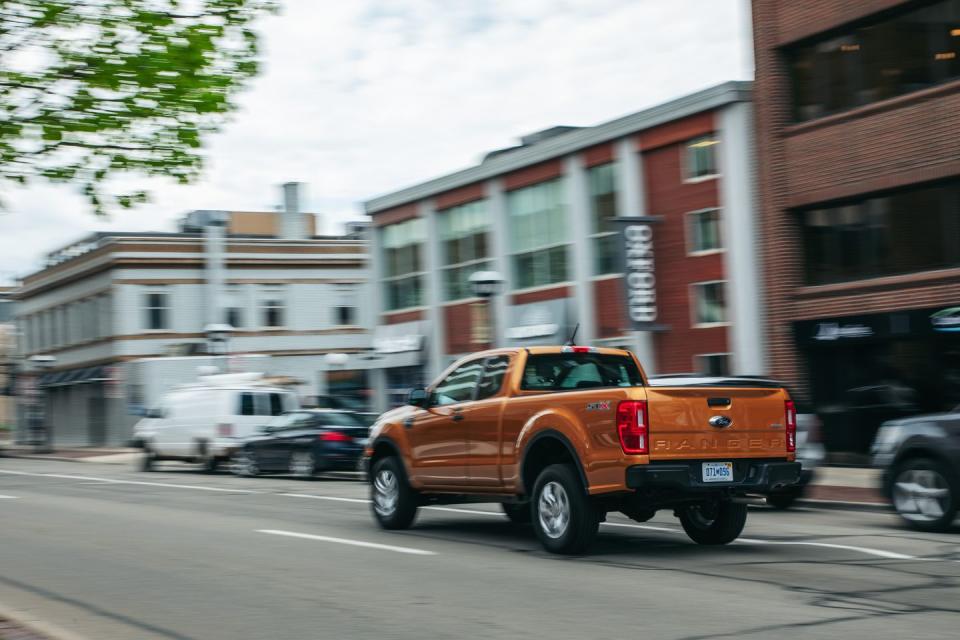What Kind of Fuel Economy Does the 2019 Ford Ranger Get in the Real World?

The new 2019 Ford Ranger's fuel economy numbers are the subject of a class-action lawsuit, the Detroit News reports.
Car and Driver has just subjected a Ranger STX to our highway fuel-economy road test and found it returned 25 mpg, just 1 mpg shy of its 26-mpg EPA highway estimate.
In comparison testing, we found the Ranger performed similarly to other pickups in its class, matching a Chevrolet Colorado and Honda Ridgeline at 15 mpg observed.
There has been a bit of a hoopla in the news over a class-action lawsuit brought against Ford claiming that the new 2019 Ford Ranger fails to meet fuel-economy expectations set in advertising. Since most of the attorneys we know were the basis for Bob Odenkirk’s portrayal of Saul Goodman (or Jimmy McGill, depending on your place in the character’s timeline), we won’t get into the legal mumbo-jumbo. Instead, we will tell you what we know about the Ranger and fuel economy.
The first two examples of the Ranger we tested were crew-cab models. Both weighed about 4550 pounds and came with four-wheel-drive transfer cases. We observed 16 mpg during our road test, which isn’t that surprising considering we drive harder than most and that it was driven in the thrilling hills north of Los Angeles. The Ranger crew-cab 4x4 that placed last in our comparison test of mid-size pickup trucks got 15 mpg observed, matching a Chevrolet Colorado and Honda Ridgeline for best in test.
The Ranger’s EPA combined estimate of 22 mpg was tops in the comparo, beating the Honda Ridgeline AWD's estimate by 1 mpg (the AWD Jeep Gladiator and Chevy Colorado are both rated at 19 mpg combined). Combined estimates often correspond with C/D observed fuel-economy figures, but the Ranger was also the only truck in the test with a forced-induction engine, a turbocharged 2.3-liter inline-four. Turbocharged engines often perform much better in the laboratory setting that is an EPA dyno than in the real world.

The third Ranger that we’re in the middle of testing is a much lighter (by 500 pounds) rear-wheel-drive STX Supercab pictured above. It's the first example we've had at our home office in Michigan, meaning we were able to run it on our 75-mph highway fuel economy test. It returned 25 mpg, which is just 1 mpg shy of its 26-mpg EPA highway estimate. Pickups do not tend to perform well in our highway test because of their aerodynamic profiles, and aero drag is exponential.
The Ranger’s performance mirrors what we’ve seen in other similarly sized pickups. A 2017 Toyota Tacoma TRD Pro's 21 mpg in our highway test, for instance, was 2 mpg short of its EPA highway rating. A diesel-powered GMC Canyon matched its EPA estimate of 28 mpg when cruising at 75 mph, while a Honda Ridgeline beat its 25-mpg EPA highway estimate considerably in our test, also achieving 28 mpg.
So basically, we’re saying that the Ford hasn’t performed wholly unexpectedly in our hands. Ford should put a feather in its cap knowing the only pickups to better the Ranger in our highway fuel-economy test have been either diesel-powered or unibody construction.
('You Might Also Like',)

